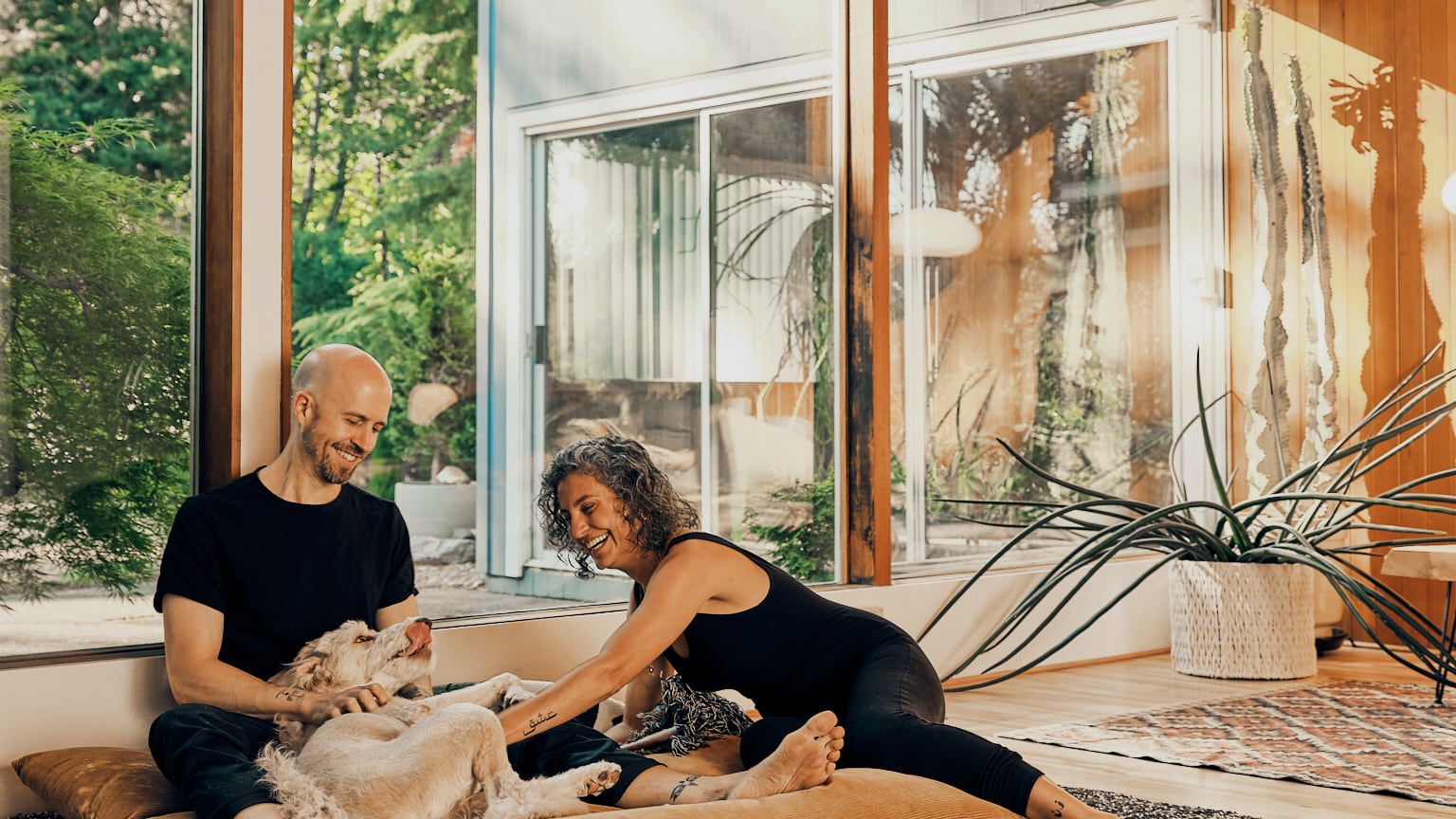Tucked into a shelf that separates the kitchen and dining areas of Taravat Talepasand’s midcentury modern home are three female figures in porcelain and bronze whose bare breasts balloon out from niqabs that cover the rest of them. These are, Talepasand notes with a chuckle, “the sculptures that got me in trouble.” Early in 2023, they landed at Macalester College in St. Paul, Minn., as part of a traveling retrospective of the Iranian American artist’s work. Soon after, a group of Muslim students protested the sculptures, along with other pieces, as a mockery of Islam’s modest dress code. Macalester administrators temporarily shut down the exhibit, covering the gallery walls with (irony alert!) black curtains, and the ensuing stir made cancel-culture headlines.
These days, the pieces, while not solely decorative—Talepasand’s multimedia works are rooted in the iconography of political pro- test, in particular Iran’s Woman, Life, Freedom movement—are a reminder that even the most subversive art can have a place in a family home.
And it’s a striking home. When Talepasand and her husband, Bobby Velon, moved to Oregon, where Talepasand now teaches at Portland State University, they knew exactly what they were looking for: a midcentury modern house with lots of light, though not one of the area’s highly sought-after Rummers. (“Those flat roofs—the rain just sits,” explains Talepasand, who was born in Eugene and grew up in Beaverton.) After an ill-fated flirtation with a place in Lake Oswego, the 1956 Hillsboro three-bedroom appeared on Talepasand’s phone screen at exactly the right time. “We were the first people to see it, and we offered the asking price,” she marvels.
The home’s first resident, a local furniture-store owner, had it designed in 1955 and built in 1956. Simple, graphic lines define the space: Tongue-in-groove hemlock boards line the home’s airy liv- ing room, and the central hallway’s white paneling stops well short of the soaring vaulted ceiling, adding to the sense of spaciousness.
Talepasand and Velon made small but impactful changes: They replaced the open kitchen’s appliances and countertops and fitted the walls with Heath Ceramics tile. They also converted the garage into what Talepasand calls a “flex room” with a work table for Bob- by and a frosted-glass roll-up door that provides plenty of light for painting. An awkward space annexed to the master bedroom in 1980 to fit a hot tub also needed to be addressed, which they did by turning the elaborately tiled well into a rock-filled planter for a voluptuous Xanadu philodendron.
From the colorful Iranian rugs and chunky floor pillows in the living room to the floor-to-ceiling windows that blur indoors and out, the house’s casual intentionality extends to Talepasand’s art collection, which comprises works from friends, colleagues, former students, and others. There are no crowded gallery walls here; paintings, prints, and sculptures don’t occupy a single space but are spread throughout the one-story house. In the hall that connects the home’s bedrooms is a series of lithographs by Portland artist Chris Johanson and a Nicole Eisenman artist’s proof. When Velon’s children moved in four months ago, they were given free rein to choose art for their rooms. Charles chose three paintings by Terry Powers that reference the films Stand By Me, Boyz N the Hood, and Teen Wolf, as well as a small sculpture by Talepasand’s former San Francisco Art Institute colleague Ebitenyefa Baralaye. In Stella’s room, an “old, old” painting of Talepasands’s hangs amid a grid of photos; a sculpture of a hand created by one of her former students, Laura Rokas, sits on a shelf above the bed.
0 of 9
And there is Talepasand’s own work: Delicate graphite drawings in walnut frames hang in the entrance hall; the living room fea- tures paintings in vivid, layered shades of yellow and blue egg tempera. And the terrarium that sits on a ledge above the two-sided fireplace? “The largest hand-blown meth pipe I’ve ever had made,” Talepasand says. It was originally part of an installation about the meth epidemic in Iran that targeted women: “In [places like] hair salons, they were telling [women] to use this drug, as it would make them look pretty and lose weight.”
Meanwhile, the home’s bits and pieces of ephemera—rocks from the Nehalem River, Persian nazar amulets, a bowl of shed skins from the garter snakes that meander through the back- yard—are about the life Talepasand shares with her family. “All these things were traded with other artists and former students, whether they’re books, or rocks, artworks old and new...it’s really fun to merge [them] with a partner and kids, to learn to have just enough.” In this way, she notes, the house feels like a work of art in itself.
They bought the place only a short time before COVID, but despite the almost immediate isolation, Talepasand says, “It’s been awesome having time to get this house to a place where it just feels good.” She contrasts the process with the urgency she witnessed as a kid, recalling: “My parents, on the weekends, would be like, ‘We have to landscape! We have to do work on the house!’ They had this set amount of time. We get to do this.”
TARAVAT TALEPASAND’S PORTLAND TOP FIVE
- FAVORITE CSA > Sparrowhawk Farm
- FAVORITE FOOD TRUCK > Comida KIN
- FAVORITE PLANT SPOT > Portland Nursery
- FAVORITE GALLERY > Helen’s Costume Fine Art
- FAVORITE LANDMARK > Witch’s Castle in Forest Park
This story is part of Nester, Willamette Week’s annual home magazine. It is free and can be found all over Portland beginning Friday, Sept. 22, 2023. Find your free copy at one of the locations noted here, before they all get picked up! Or, order one through our store.










